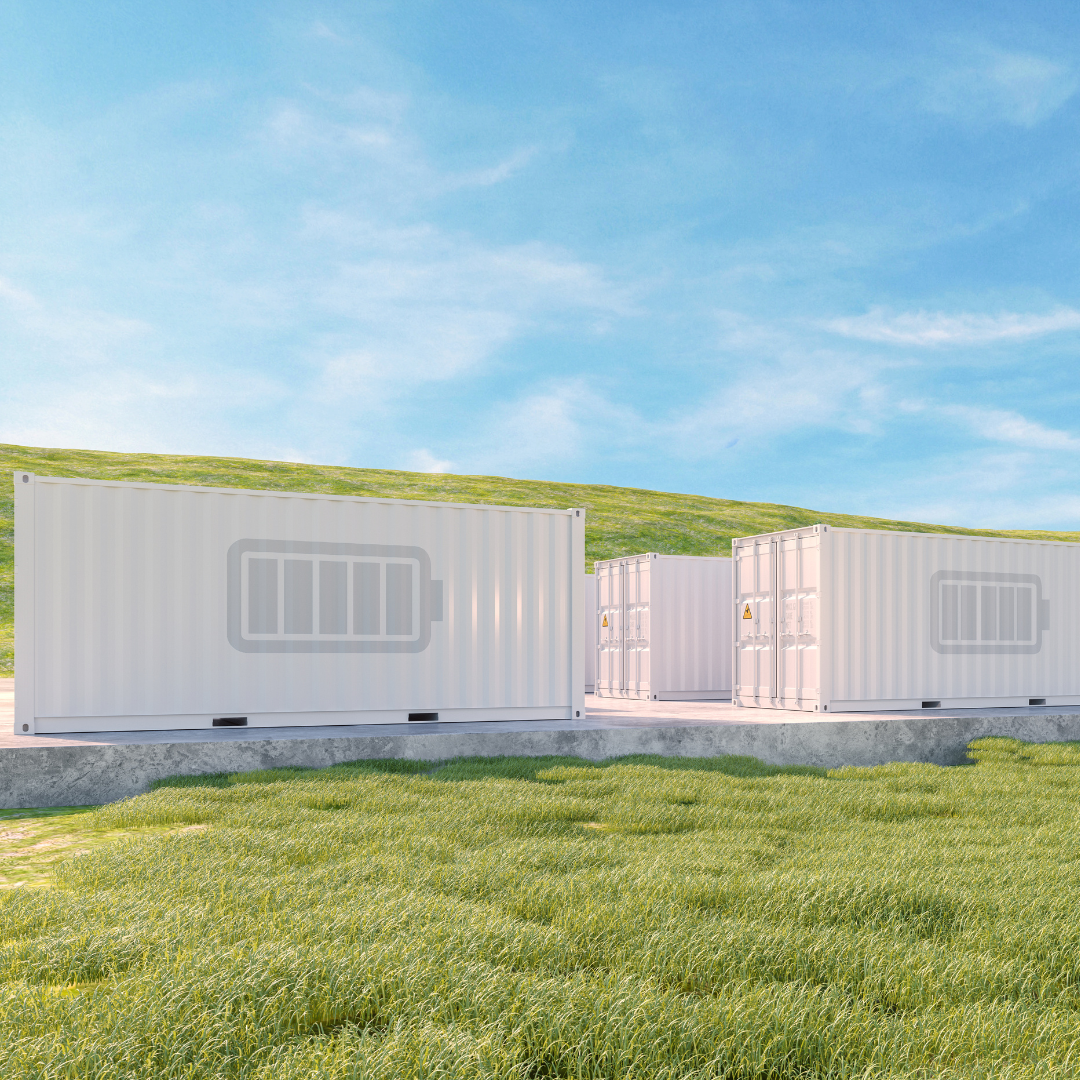- Services
- Business Solutions
- Who We Are
- Insights
- Contact Us

As the world transitions more fully toward renewable energy for its power supply, investors and developers are choosing to diversify their portfolios to include renewable energy sources. And as more companies invest in renewable energy, the need for large-scale battery storage is growing. To support developers who are expanding into new territory, we’ve launched a blog series focusing on different renewable energy sources—as well as battery storage—and key considerations for project development.
What is battery storage and how does it work?
While renewable energy sources such as solar and wind power have gained significant traction, output can be unpredictable. Where power plants that use fossil fuels can run as long as there is available feedstock to combust, renewable energy is generally captured more intermittently. For example, some days are sunnier or cloudier, or windier or calmer. Because of this variability, it can be difficult to rely on renewables as a primary source of energy.
This is where battery storage comes in, providing a way to store excess energy produced during times of high output and use it to compensate for periods of low output, thereby delivering uninterrupted electricity. Battery storage systems work by converting electrical energy into chemical energy and storing it in a battery. When the energy is needed during periods of low output, such as at night or when the wind is calm, the chemical energy is converted back into electrical energy and delivered to the grid.
Battery storage projects typically involve the installation of large-scale battery storage systems, which can be used to store excess energy generated by renewable energy sources. These projects can be standalone or integrated with existing renewable energy projects, such as solar or wind farms. Many types of batteries can be used for energy storage, including lithium-ion, lead-acid, and flow batteries. Lithium-ion batteries are the most commonly used type of battery for energy storage due to their high energy density and long lifespan.
What are the benefits of battery storage?
The primary benefit of battery storage is that it allows us to rely more fully on renewable energy. One of the biggest hurdles to widespread adoption of renewable energy is the concern about its reliability and ready availability. By helping to bridge natural gaps in renewable power generation, battery storage gives consumers more confidence in their electrical supply and ultimately contributes to greater demand for renewables.
Battery storage systems can be deployed near major metropolitan areas and anywhere that renewable energy is captured, resulting in greater energy security across the US that avoids challenges associated with climate regulations, price fluctuations or supply disruptions, and cross-border contracts.
What do battery storage projects entail?
Battery storage project development is complex and involves site selection and acquisition, permitting, design, construction, and operation. Site selection (also called "siting") and acquisition involve identifying and acquiring the surface rights to the target lands — typically between 1-10 acres depending on the size of the project.
After one or more viable sites are identified, landowner contact and negotiations can begin. The developer, or their land service provider, will work directly with landowners to secure land for the project, often through long-term leases or purchase agreements. Local authorities may also be involved in the permitting and approval process for the project, which can involve environmental and zoning considerations.
In some cases, large-scale battery storage projects may face opposition from the surrounding communities or from environmental groups. This can be due to concerns about the impact of the project on nearby protected areas or about the potential for the project to prevent the land from being used for other purposes. The developer's land team can provide scouting, GIS mapping, and ownership information to mitigate such project issues.
Industry Outlook for Battery Storage
Battery storage is an important technology that is helping to make renewable energy more reliable and accessible. We can expect to see the number of battery storage projects increase significantly, as demand for battery storage systems is slated to grow as renewable energy sources become more prevalent. According to a report by the International Energy Agency, the global energy storage market is expected to grow by a factor of six by 2030, reaching 158 GW of installed capacity. This growth will be driven by the increasing deployment of renewable energy sources, as well as government incentives and mandates for energy storage.
As the demand for renewable energy sources continues to grow, so too will the demand for battery storage systems. By working closely with local communities, stakeholders, and service providers, developers can ensure that their battery storage projects are completed successfully.
About CINCO
Cinco supports companies across the US with land and title issues related to oil and gas, renewable energy development, energy storage projects, legal matters, insurance underwriting and more.
This is part of our introductory series on energy storage and renewable energy, covering geothermal, solar, wind, and battery storage.
For more information about battery energy projects or for answers to questions on the land acquisition and development process, reach out to us.
Subscribe to Our Blog
We will send you an email whenever a new blog posting has been published.
